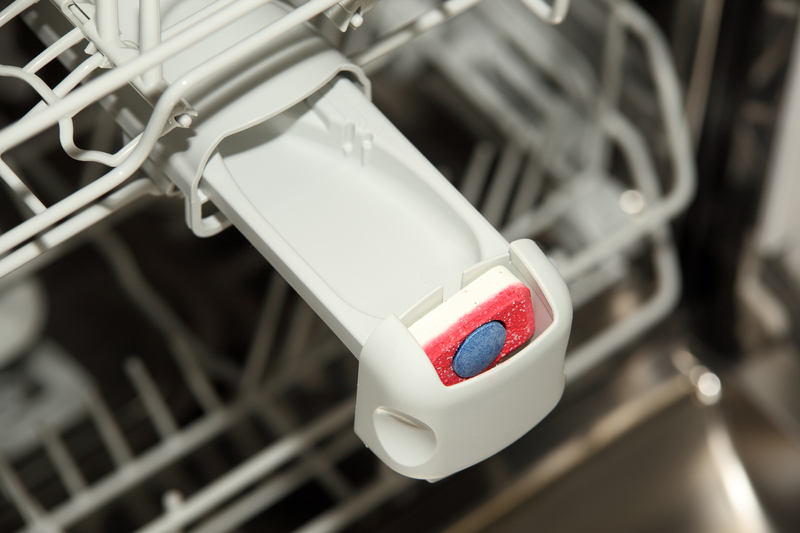Getting New Oven Smell Out Fast
Posted on 25/07/2024
Buying a new oven is always exciting. It promises better cooking, improved energy efficiency, and even an aesthetic boost to your kitchen. However, the excitement can quickly turn into frustration when you realize your kitchen smells like burning plastic every time you turn the oven on. This is the notorious "new oven smell," usually the result of manufacturing residues like oils, adhesives, and protective coatings. Here, we'll cover the steps you can take to get rid of this unpleasant odor quickly and effectively.
The Science Behind the New Oven Smell
Understanding why your new oven smells is the first step toward eliminating the odor. The elements that contribute to this unpleasant smell are typically:
1. Residual Manufacturing Oils: Lubricants used in various joints and hinges during the production process.
2. Insulating Materials: Special materials used in the oven walls to improve heat retention.
3. Protective Coatings: Chemicals applied to the metal surfaces to prevent oxidation and corrosion before purchase.
When you first use the oven, these components heat up and release volatile organic compounds (VOCs), which produce the odor. Luckily, this smell isn't harmful, but it's undoubtedly annoying and can affect the taste of your food.

Steps to Eliminate the New Oven Smell
Step 1: Initial Burn-In
- Preheat the Oven: Set your oven to 400-500?F (204-260?C).
- Empty the Oven: Remove any trays, racks, and packaging.
- Run the Oven: Allow it to run empty for 30-60 minutes.
- Ventilate: Open windows and use an exhaust fan to dissipate the fumes.
Step 2: Vinegar and Water Solution
- Prepare the Solution: Mix equal parts of water and white vinegar in an oven-safe bowl.
- Place in Oven: Set the bowl in the center of the oven.
- Heat the Oven: Preheat to 200-250?F (93-121?C) and let it sit for an hour.
- Cool Down: Turn off the oven and let it cool completely.
The acetic acid in vinegar helps to neutralize the VOCs, making this method highly effective.
Step 3: Baking Soda Rinse
- Prepare the Solution: Dissolve 1 tablespoon of baking soda in 1 cup of warm water.
- Wipe Down: Use a sponge or cloth to wipe the interior surfaces of the oven.
- Rinse: Follow up with a rinse of plain water.
Baking soda is an excellent absorber of odors, and this extra step ensures a cleaner, fresher-smelling oven.
Additional Tips for Odor Removal
- Lemon Water: Boil a pot of water with slices of lemon in it and place it in the oven while it's warm. The citric acid can help neutralize odors.
- Activated Charcoal: Leaving a bowl of activated charcoal in the oven overnight can absorb lingering smells.
- Use the Oven Light: Keeping the oven light on for a couple of hours can help dissipate odors faster.
Pros and Cons of New Oven Odor Removal Methods
Pros:
- Efficiency: These methods can quickly neutralize odors.
- Natural Ingredients: Using substances like vinegar, lemon, and baking soda is eco-friendly.
- Cost-Effective: These household items are inexpensive.
Cons:
- Time-Consuming: Initial burn-in and multiple steps can be time-consuming.
- Odor Sensitivity: People sensitive to smells might still find it unpleasant.

Takeaways
- Act Quickly: Don't ignore the smell; address it before you start cooking.
- Natural Solutions Work: Simple household ingredients can be highly effective.
- Ventilation is Key: Ensure that your kitchen is well-ventilated to speed up the dissipation of odors.
Conclusion
Getting the new oven smell out quickly is essential for creating a pleasant cooking environment. By following the outlined methods, such as the initial burn-in, a vinegar-water solution, and a baking soda rinse, you can effectively eliminate those pesky odors. The natural ingredients and careful steps not only remove the smell but also ensure your new oven is safe and ready for culinary adventures. Remember, proper ventilation and repeated treatments might be necessary for the best results. Enjoy your cooking experience without the worry of unwanted smells affecting your meals.

